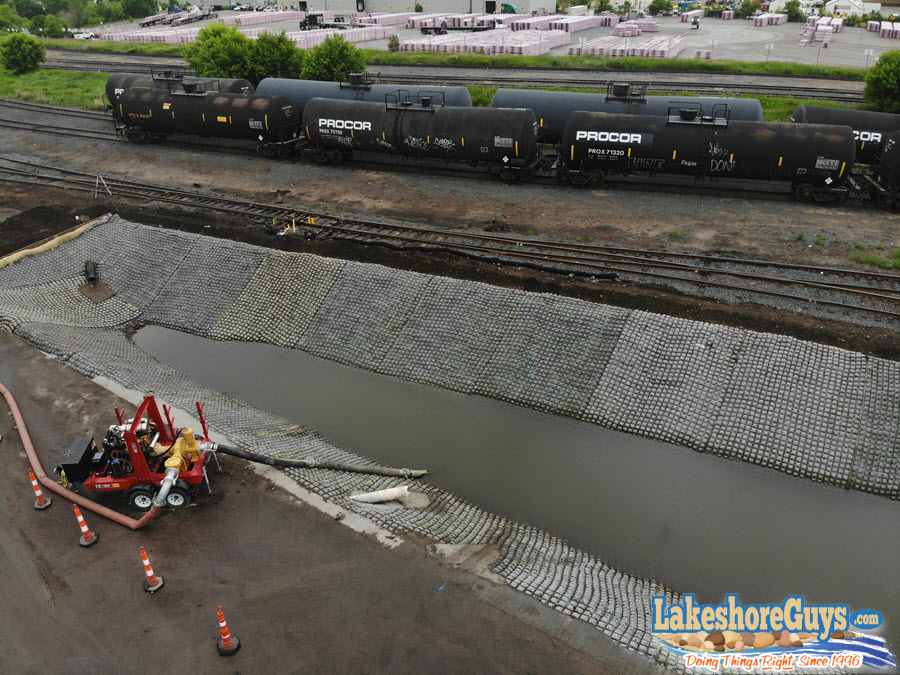Concrete Mattress / Concrete Block Mat / Flexamat Installation in Minnesota, Wisconsin, & Throughout the Midwest
If you manage commercial property, are a plant manager, or are a different breed of homeowner, consider a concrete mattress to stop the erosion. As is well-documented on this site, riprap is an excellent way to stop erosion. But in some cases a concrete mat, like Flexamat®, either is better outright or offers a series of trade-offs that works out better in your specific situation.

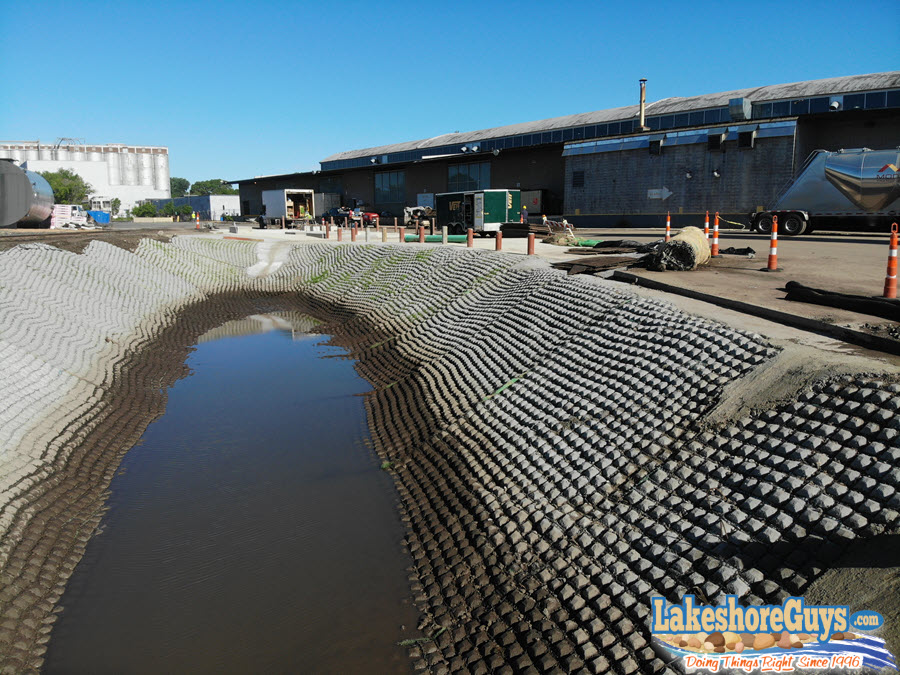
Flexamat concrete mat on stormwater basin
You might look extra hard at a concrete mat if you need to fortify a stormwater basin, a wastewater treatment pond, a drainage ditch, a spillway, or the area surrounding a bridge or other road. It can also be a solution at airports, levees, hillsides, wetlands, coastal highways, and more. (The Flexamat site has a great portfolio of specific places where concrete mats were installed to stop erosion.)
Erosion may mean that you can’t keep water out, you can’t keep water in, or both. It means bigger problems down the road, and possibly legal liability.
If a concrete mat sounds like just the ticket, read on to learn more. If you’re anywhere in the Midwest, contact Lakeshore Guys® for a consultation.

BEFORE: eroding, undersized, dangerous stormwater basin at factory in Minneapolis.
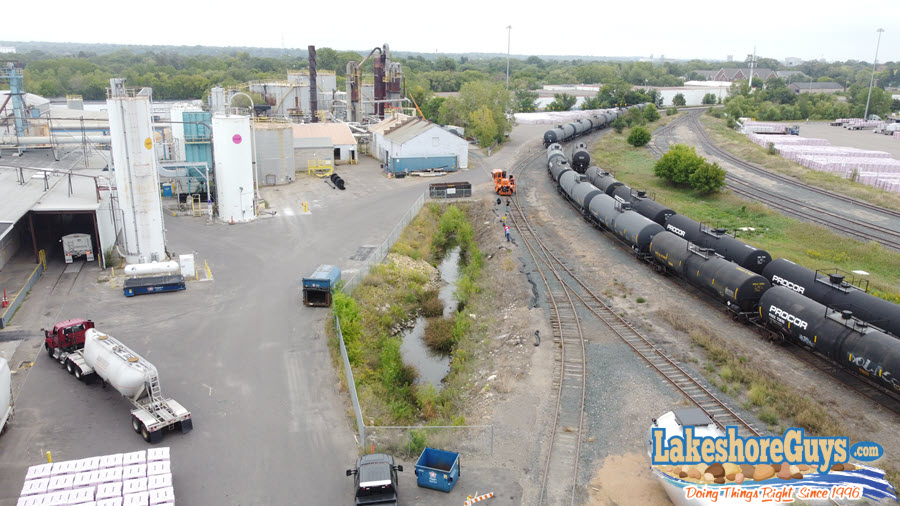
BEFORE: eroding, undersized, dangerous stormwater basin at factory in Minneapolis.
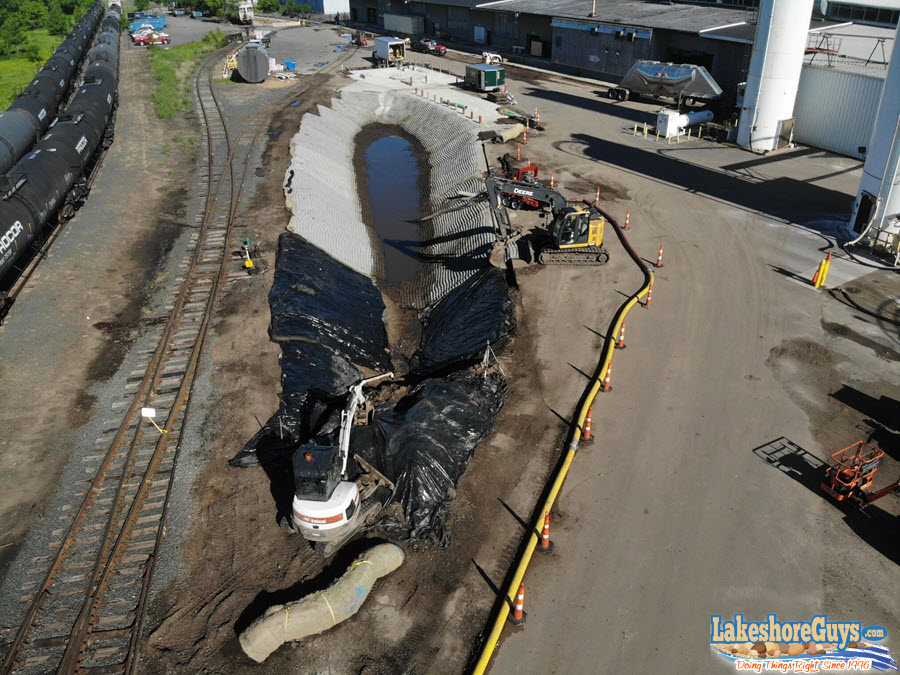
DURING: in-progress restoration of stormwater basin. Flexamat partially installed.
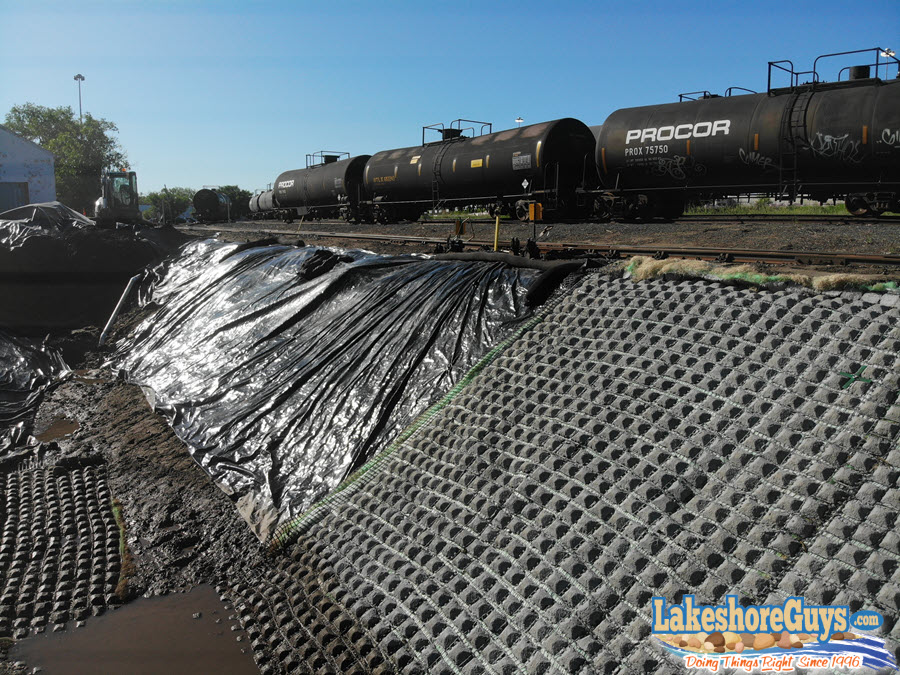
DURING: in-progress restoration of stormwater basin. Flexamat partially installed – close-up view.

AFTER: restored stormwater basin with Flexamat at factory in Minneapolis – completed by Lakeshore Guys.
What is a concrete mattress (AKA concrete block mat)?
A concrete mattress is what it sounds like: a series of small, 3-pound concrete pillows that are woven together with strong polypropelyne rope, forming a grid with 2-inch gaps between each block of concrete.
A qualified installer buys each concrete mat rolled-up, and then unrolls it onto properly graded and surface-prepped land, typically with the goal of stopping and preventing erosion.
Over time, grass and other foliage grow between the concrete blocks. This keeps the blocks in place, so that the blocks in turn add structure or to the land and prevent it from eroding.
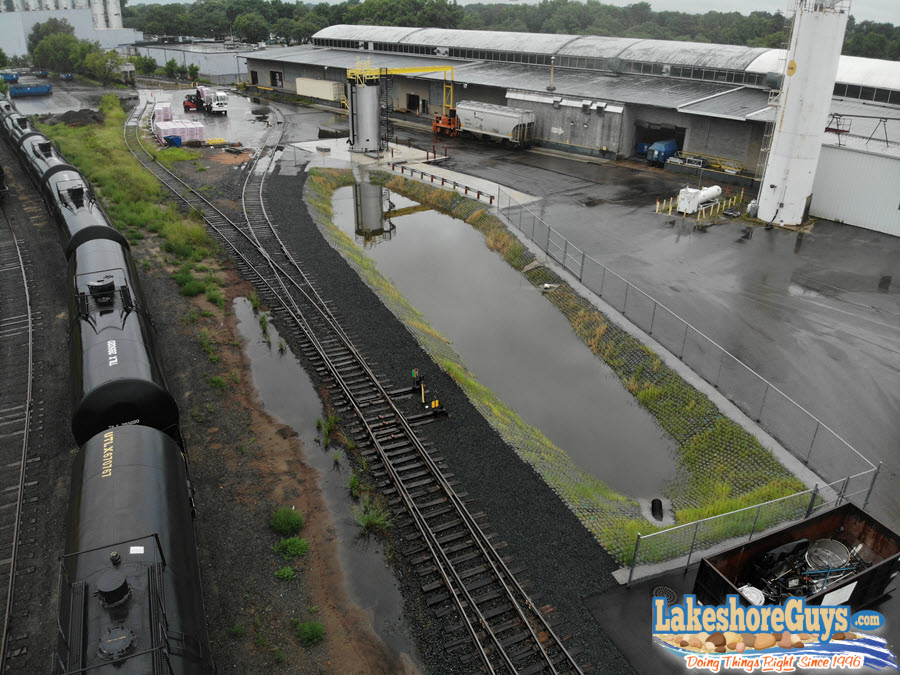
2 WEEKS AFTER restoration of stormwater basin in Minneapolis, with supportive vegetation growth visible.
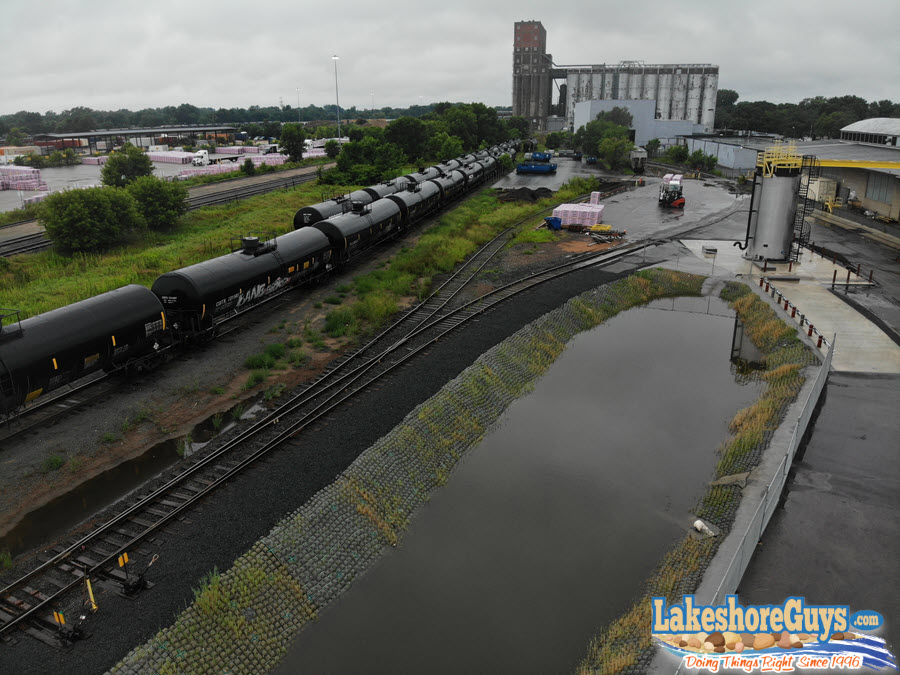
2 WEEKS AFTER restoration of stormwater basin in Minneapolis, with supportive vegetation growth visible.
What is Flexamat?
Flexamat is one type of concrete mattress – probably the best-known and most popular. There are other great brands, but we have experience in dealing with Flexamat specifically.
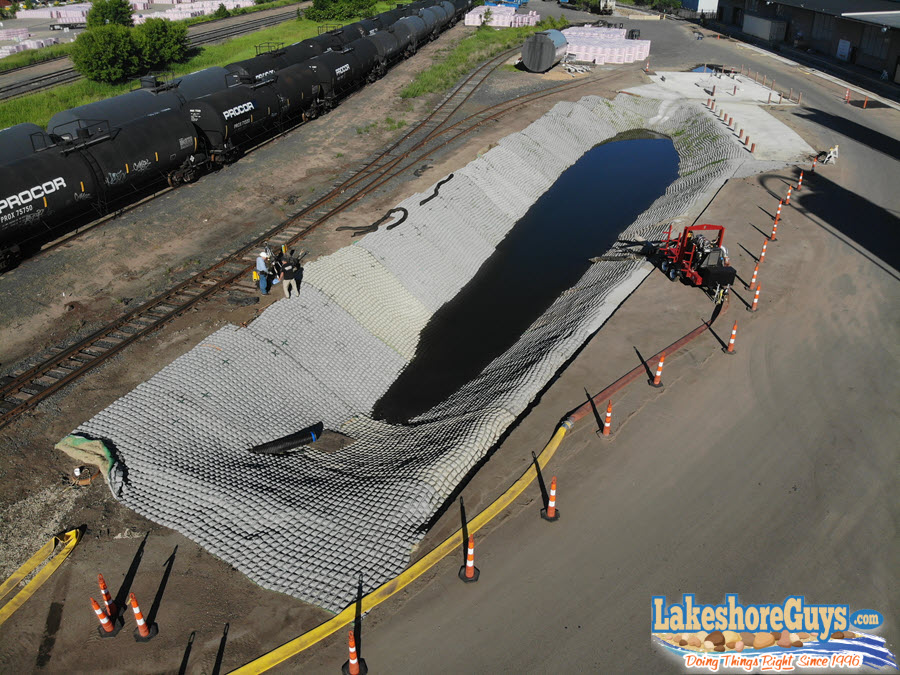
What are concrete mattresses used for?
The most common use of concrete mattresses is to stop and prevent erosion. The woven-together concrete blocks add “backbone” to a slope or the banks of a shoreline, stormwater basin, or other body of water.
Pros and cons of concrete mattresses
Pros of concrete mats:
- Prefabricated
- Drivable: vehicles can travel over it, typically, once it’s been installed and some vegetation has taken root
- Almost perfectly uniform
- Available in a variety of dimensions
- No filter fabric is needed (it’s time-consuming and tricky to install under riprap, though critical to the success of the riprap)
- Faster to install in some respects (no filter fabric to be transported, laid down, lapped, and stapled, no need to place the top layer of riprap by hand, etc.)
- Gets stronger over time, as vegetation develops its root structure and gets enmeshed with the concrete mat
Cons of concrete mats:
- Harder to transport, because if it gets jostled around too much the polypropelene mesh may break in some spots
- Extra tricky to install, because we need to use front-end loaders and similar heavy machinery to unroll it
- Less attractive
Concrete mattresses vs. riprap: which should you use?
If you’ve got residential property, you’ll probably want riprap. It produces a classic upscale look on your shoreline, there’s no vegetation growing on or around it (that requires upkeep), and how we transport and place it can be more tailored to your unique situation and needs.
If you’ve got industrial property (like a factory), you’ll probably want a concrete mat. (Every factory needs a stormwater basin, and we assume that’s the application for which you’re considering a concrete mat.) The uniformity of the concrete mat works to your benefit, and it’s easier to cover a huge surface area with concrete mats than with interlocking, hand-placed riprap.
If you’ve got commercial property, either might work, depending on your specific case.
Where do you work?
We work throughout Minnesota, Wisconsin, and the Midwest.
Consult with us
Check out our photos, our videos, and what customers say about us, . We’re registered federal contractors, and restore shorelines and embankments to DNR specifications. Contact Lakeshore Guys® any time for a consultation.




